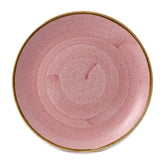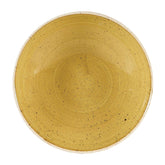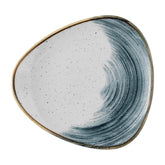From Green to Red: Decoding the Meaning Behind Chopping Boards

Coloured chopping boards have become a common sight in professional culinary environments, but have you ever wondered why they come in different colours? These vibrant boards serve a much greater purpose than just adding a splash of colour to the kitchen. Understanding the meaning behind each coloured chopping board is crucial for any professional chef or cook. In this blog, we will delve into the significance of coloured chopping boards and how they help create a hygienic and efficient workspace.
The importance of colour coding in professional culinary environments
In a bustling professional kitchen, where multiple ingredients are prepared simultaneously, it is essential to have a system in place that minimises the risk of cross contamination. This is where colour coding comes into play. By assigning specific colours into food groups, it becomes easier to identify which chopping board should be used for a particular ingredient. This simple yet efficient practice ensures that harmful bacteria and allergens are not transferred from one food item to another, reducing the risk of foodborne illnesses.
The meaning behind each coloured chopping board
Each coloured chopping board has a specific meaning and is intended for a particular type of ingredient. Let's take a closer look at the commonly used colours and their corresponding meanings:
- Green chopping boards: Green chopping boards are typically used for chopping fruit and vegetables. These boards help to prevent cross- contamination between produce and other food items. By designing a specific colour for fruits and vegetables, chefs can ensure that these essential ingredients remain uncontaminated and safe to consume.

Food safety regulations and coloured chopping boards
The use of coloured chopping boards in professional culinary environments is not just a matter of preference; it is also regulated by food safety standards. Many countries have specific guidelines in place to ensure that food establishments adhere to proper hygiene practices. These regulations often include requirements for the use of coloured chopping boards to prevent cross-contamination.
By incorporating these guidelines into their daily operations, professional chefs and cooks can demonstrate their commitment to maintaining the highest standards of food safety. It is essential for culinary professionals to stay informed about local food safety regulations and ensure compliance to protect the health and well-being of their customers.
Benefits of using coloured chopping boards
The use of coloured chopping boards offers several benefits beyond food safety. Here are some key advantages to consider:
- Efficient workflow: With colour-coded chopping boards, chefs can work more efficiently by quickly identifying the appropriate board fir each ingredient. This helps saves precious time in a fast paced kitchen environment.
How to properly clean and maintain coloured chopping boards
Proper cleaning and maintenance of coloured chopping boards are essential to uphold food safety standards. Here are some guidelines to follow:
- Wash with hot, soppy water: After each use, wash the chopping board with hot soapy water. This helps remove any food particles and bacteria that may be present.
Different types of coloured chopping boards available in the market
When it comes to coloured chopping boards, there are various materials and types to choose from. Here are some common options available in the market:
- Plastic chopping boards: Plastic chopping boards are lightweight, affordable, and easy to clean. They come in a range of colours to facilitate colour coding in the kitchen.
Where to buy coloured chopping boards
Coloured chopping boards can be brought from ourselves, Lordwell Catering Supplies, we offer a wide range of coloured chopping boards to meet the needs of professional chefs and cooks. Our high quality products ensure food safety and durability in the kitchen.
Tips for using coloured chopping boards effectively in the kitchen
Ensure that all kitchen staff are aware of the meaning behind each board and understand the importance of proper usage. Regular training and reminders can help reinforce good practices. Establish a cleaning schedule to ensure that chopping boards are regularly cleaned and sanitised. This helps maintain food safety standards and prolong the lifespan of the boards. Store the coloured chopping boards separately to avoid any confusion or accidental cross- contamination. Use designated storage areas or racks to keep them organised and easily accessible. Regularly inspect the chopping boards for signs of wear and tear. Replace any boards that are damaged or have deep grooved to prevent bacteria from accumulating.
Conclusion
Coloured chopping boards are more than just a visual addition to the kitchen; they are a vital tool for maintaining food safety and preventing cross-contamination in professional culinary environments. Understanding the meaning behind each coloured chopping board and implementing proper usage is essential for any chef or cook. By adhering to food safety regulations, using coloured chopping boards effectively and maintaining them correctly, culinary professionals can create a hygienic and efficient workspace. So the next time you step into a professional kitchen, take a moment to appreciate the significance of those vibrant chopping boards.






